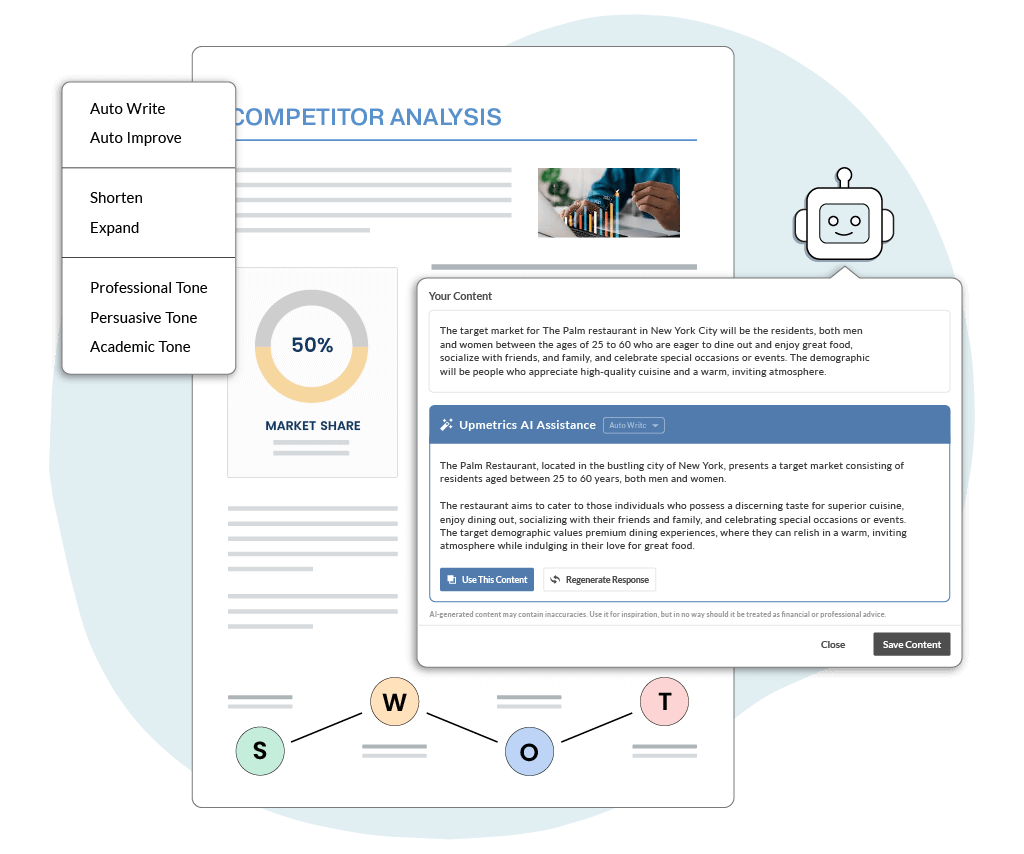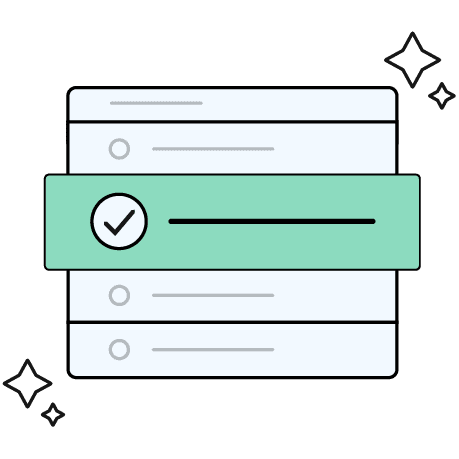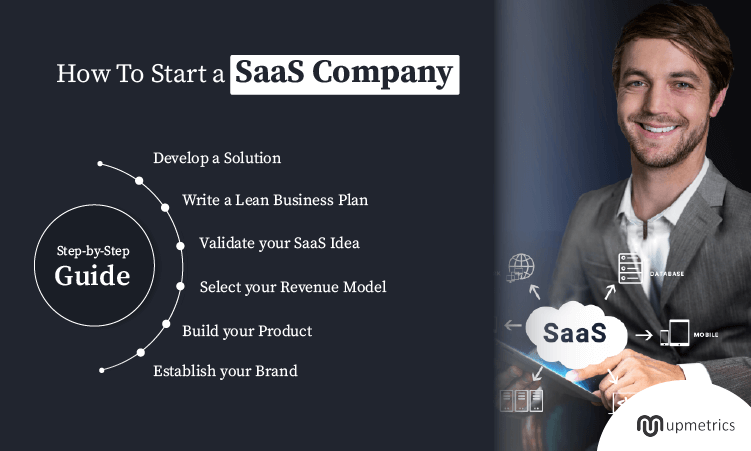Fast Fact
- Startup costs: $50,000-$150,000
- Industry trend: Growing
- Difficulty: Moderately difficult
- Profitability: 68-75%
- Time to build: 6–18 months
- Commitment: Full-time
From an era where it took hours at length to install software to an era where it takes a few minutes to avail of software services – the technology generation has come a long way.
As of 2023, the SaaS space is worth 195 billion dollars and it is expected to grow tremendously over the next few years. There is no better time than today to start your own SaaS business.
Whether you are a software developer with a solid technical foundation or a smart-witted entrepreneur wanting to capture their share in this thriving market, SaaS is perfect for you.
However, starting a SaaS business is not an easy task. It’s complicated and requires a series of trials, testing, and reiterations to get it right.
Well, we have your back. This step-by-step guide answers all your questions regarding how to start a SaaS company in great detail.
So simply, let’s dive right in.
What is a software as a service (SaaS) company?
SaaS companies are typically software-based companies offering their services through web-based applications or Internet browsers. Most SaaS companies charge a monthly or yearly subscription from their customers while there are other ways to generate revenue as well.
Unlike traditional software companies that have a slightly restrictive structure, SaaS business models offer a plentitude of opportunities with their flexible structure. These softwares are hosted over individual cloud servers making it easy to scale and deploy changes.
Wondering how much money will it cost you to set up a SaaS business? Well, read along.
How much money do you need to start a SaaS business?
The average cost to start a SaaS (software as a service) business in the US is anywhere between $50,500- $150,500. Depending on the complexity of your SaaS business model, the costs can extend up to $500,000.
These costs are highly influenced by factors such as development, legal, branding, and marketing costs.
Now before you start looking out for funds, let’s have a look at detailed steps that will help you start a SaaS company systematically.
Step-by-Step Guide to Start a SaaS Company
Table of Contents
- Develop a Solution for a Customer Problem
- Write a Lean Business Plan
- Validate Your SaaS Idea
- Select Your Revenue Generation Model
- Brainstorm a Name for Your SaaS Product
- Register Your Business
- Build Your Product
- Consider Your Funding Options
- Establish Your SaaS Brand
- Develop a Marketing Strategy
- Measuring Success with Metrics
1. Develop a Solution for a Customer Problem
“You don’t need a brilliant idea to start a business. You just need a customer with a problem and a solution to offer.”
To build a successful SaaS business, begin by identifying the problems around you. Pay attention to the personal and professional communication in your everyday life. Look at your own struggles with different products and services and see if there is an untapped market opportunity.
Another brilliant idea is to explore the ideas on Reddit and Quora channels to skim different sorts of problems. The overall idea is to find a problem worthy enough to get a SaaS solution built around it.
Now, while exploring potential solutions for the problem, you have one of these 3 ways to go around:
- Identify the gap in existing solutions and find a way to fix it.
- Talk with potential customers and identify their pain points.
- Leverage your understanding of the industry to devise a solution.
Don’t try to solve multiple problems all at once. Stick to a specific niche and develop a market around it.
2. Write a Lean Business Plan
Start by quickly translating your idea onto a paper by writing a lean business plan. Unlike traditional detailed plans, let’s keep it short for now.
Lean planning is an effective and easier way to get around when your SaaS idea is yet to be validated. This one-page pitch includes a quick overview of strategy, tactics, business model as well your SaaS business proposition.
Create a checklist and ensure that you answer the following questions in your SaaS business plan.
- What problems will you solve with your SaaS product?
- What are the USPs of your SaaS company?
- What will be the cost of building and deploying a minimum viable product?
- Who is your target market or what different market segments will you target?
- Who are your competitors and what is your competitive edge?
- Who will be there on your SaaS team?
- What is the value proposition of your saas business and what are the milestones you plan to achieve?
- What will be your revenue model?

Pro-tip
Write a lean business plan in no time
Get Upmetrics’ lean plan template, import data directly into the editor, and start editing using Upmetrics AI Assistant.

3. Validate Your SaaS Idea
After identifying the problem and devising a solution for it, it is now time to validate your SaaS idea. Take that lean plan and check if the assumptions you made are viable or not.
This step is important to understand if your idea has enough potential to make you money. Be realistic instead of diving right into the first idea that you consider to be best and pragmatic.
Here’s how you will validate your SaaS product idea:
Get to know your target customer
Getting to know your potential customer is perhaps the most important part of starting a SaaS company.
Gather a ton of primary data by talking to your potential customers directly. An easier way would be to design surveys and interviews in your target market. Run a search ad and launch a Kickstarter to collect realistic data for your SaaS company.
This step will help you understand whether or not the problem identified by you resonates with your potential customers and if your proposed solution is perfect for them. Moreover, this step will help evaluate the range within which you can price your SaaS products.
Conduct a competitive analysis
“To compete effectively, you must know your competition better than they know themselves.”
Competition is nothing to be afraid of. It’s in fact an indication that the problem you are attempting to solve is actually a realistic problem that demands a solution.
Conduct market research and identify the SaaS providers that will pose your SaaS business as a competition. Evaluate their SaaS products and identify where they fall short in fulfilling the customers’ wants.
Conduct a SWOT analysis and identify these SaaS companies’ strengths, weaknesses, opportunities, and threats. Determine your competitive edge over these businesses and devise your software accordingly.
Create a minimum viable product
Creating an MVP is the easiest and most practical way of validating business ideas. It is the basic and simplest version of your product, focusing on one value proposition.
One huge mistake made by SaaS businesses is delaying the launch till they get their extensive product ready. Well, let’s break the bubble- your perfect SaaS product will never be ready.
Launching an MVP in the market will allow you to gather real-user feedback and accordingly make iterations to the product features and design. This will help you create a sustainable product that can beat other SaaS products in the market.
Here are a few things to keep in mind while launching your MVP:
- Keep your MVP extremely simple. Include bare minimum features that are extremely crucial for your SaaS application.
- Gather the feedback right from the beginning. Talk with your potential customers to understand what they like and dislike and what they want from your product.
- Don’t ignore the feedback if it’s not to your liking. Take it constructively and be prepared to change the idea if it doesn’t suit your audience.
If you don’t have the resources to create an MVP of your SaaS application, you can get the work done with wireframes, mockups, explainer videos, landing pages, and even paper sketches.
Leverage the data collected using MVP and use it resourcefully to build a product that people will actually pay for.
4. Select Your Revenue Generation Model
In this step, you will determine a way to make money by selling your SaaS software services. In simple terms, a pricing model to charge for your SaaS products.
SaaS businesses typically use one of these revenue generation models depending on their type of offerings and the target market.
Subscription-based pricing model
In the SaaS industry, SaaS subscriptions are the commonly used method of generating revenue. SaaS companies charge monthly or annual fee on their subscriptions and sometimes even quarterly. You can also offer a free trial before taking the commitment from users.
A subscription-based pricing model helps you retain a customer base for a longer time, given that you continue to provide effective solutions to their problem.
Tiered pricing
Tiered pricing is suitable for SaaS companies that can easily segment their users based on available features. In this method, you create different pricing plans ranging from one with the least features and support to the one with maximum features and support.
Customers get to select what level of features and support they require by choosing specific plans.
User-based pricing
Another method used by SaaS companies is to charge their services depending on number of users. For instance, $10 per user/ month.
This method is suited for SaaS companies that are targeting businesses of different sizes, i.e. small, medium, and large scale.
Flat pricing model
In this pricing model, SaaS businesses charge a flat fee in the beginning and offer lifetime access to the services. However, keep in mind, that this model will not give you recurring revenue.
Free pricing
Some SaaS companies offer their services for absolutely free and generate revenue by running ads on their platform. While your prospective customers would love free services, they may not like the invasive nature of ads and interruptions.
Depending on your SaaS business model, you can create a hybrid pricing strategy while keeping your target audience in mind.
It’s important to price your services within a range that is feasible for your potential customers.
5. Brainstorm a Name for Your SaaS Product
In the business world, a great name is a great asset. The success of your SaaS company might not entirely rely on a name, but it definitely plays a crucial role in building your brand image.
Choosing a name may seem like an easy task. But it isn’t. Here are a few things to keep in mind while brainstorming and finalizing your SaaS business name:
- Pick a simple and easy-to-spell name. Don’t go around messing with the spelling just to make it creative.
- Pick something that can be easily remembered and recalled.
- Choose a name that resonates with your SaaS product idea.
- The name should of course be unique. Check the state registry to ensure that there are no other businesses operating with the same name.
- Check the availability of domain names and social media handles before finalizing the name.
Brainstorm different ideas for the name using online name generators. And, don’t forget to get help from friends and family members to help finalize a suitable SaaS company name.

Want a Unique Name for your SaaS Company?
Generate a brandable and catchy business name in seconds with our free business name generator for saas company.
6. Register Your Business
It’s important to legally register your SaaS business by complying with the applicable state and federal rules. Now, the registration process may vary depending on the industry you are planning to enter. So check that with an expert or official pages to ensure complete compliance.
Select a business entity
A business entity is the legal identity of your SaaS company that dictates its liabilities, tax structure, and regulatory compliance. It separates you from the business making it a completely separate entity.
SaaS companies can choose between sole proprietorship, LLC, C.corp, partnership, or LLC partnership business structure models for their business.
Identify the pros and cons of each business structure before determining the ideal structure for your software company.
Also, consider how you want your company to look in front of investors and the public. This will help you pick a business entity that’s suitable for your idea.
While registering a business, consider getting a DBA (doing business as) name if you plan to operate your business with another name.
Apply for tax registration & business EIN
Comply with the state rules and apply for tax registration of your SaaS company. Also, get your EIN number from an Internal Revenue Service (IRS) portal.
Employer’s identification number (EIN) is like the social security number of your business giving it a unique identity. This unique number is essential while applying for a business bank account, filing taxes, officiating payrolls, and filling out an application for a business credit card.
7. Build Your Product
After validating your ideas and gathering feedback from MVP, it is now time for software development of your product. Select a development methodology and get your test models working.
To build your product and work on software development, you will need a team with technical expertise. At this stage, you have one of the following options to consider:
- Hire an in-house team- remote or on-site
- Hire freelancers/ agencies
It is recommended to keep the development process in-house instead of outsourcing it. Having an in-house team will allow you to have complete control over the development and its scope. You can rigorously monitor the quality and speed up the process to meet your requirements.
Instead of renting a commercial place, it is better to hire a remote team and individual software developer. This will help you save unnecessary expenses on lease and monthly rentals. Don’t be afraid to make overseas hires. Invest in collaboration and communication tools to allow a seamless flow of development process in your company.
Also, stop waiting for a perfect time. Start as soon as the MVP of your product is ready. Get your landing pages in line and start with light advertising. It’s recommended to start collecting contact information of your target customers and running targeted ads on them.
8. Consider Your Funding Options
Now comes the funding. You need funds to start software development and work on your SaaS company. The question is how much fund will you require and where will you acquire that funds from?
If you haven’t made the financial projections earlier, it is the perfect time to work on it. Get detailed projections for sales, revenue, startup costs, and overhead expenses to assess the flow of money in and out of the business.
Many SaaS companies venture into the market by bootstrapping their projects. And ideally, it’s the right way to do so. However, if you don’t have enough funds, here are a few options for you to consider:
- Bank loans
- Angel investors
- Venture capital firms
It’s also a feasible option to get lending from friends and family instead of relying on angel investors right from the beginning. Doing so will have two advantages. Firstly, you will have complete control over the product and secondly lower liabilities.
However, venture capitalists and angel investors can offer an influx of cash that can prove to be beneficial in development and marketing activities.
Overall, assess your needs and understand the implications of each before pitching your plan to potential investors.
9. Establish Your SaaS Brand
The market is crowded with SaaS businesses trying to capture their share of the market. To stand tall in the competition, you need to create a remarkable brand with a solid competitive edge.
The first step in branding would be to determine the look and feel of your software product and your overall SaaS company. Begin by putting together the logo, colors, and designs that will dominate your SaaS software.
Ensure that the visual elements of your software align with the tone you want to establish in the market. For instance, if you want to come across as a functionally professional but quirky software brand, you need your user interface to align with that image.
Even the domain name is part of your branding strategy. Splurge a little and get a powerful domain name for your SaaS company. A short, simple, easy-to-spell .com extension will help you establish a solid presence right from the beginning.
Lastly, ensure that you have your core values, mission, and purpose clearly aligned. Having clarity in vision will help you create a compelling brand value in the minds of your target customers.
10. Develop a Marketing Strategy
Now, that your software is ready, what are your plans for customer acquisition? Even the most brilliant SaaS software needs to make its presence in the target market to start getting sales.
In this step, you will design your go-to-market strategy to market your SaaS software. Even if you are testing the product on early adopters, you do need a proper marketing plan to reach the target audience.
Wondering what makes a perfect marketing strategy? Well, answer these questions to get your answer:
- What will be your sales strategy and the sales channel?
- How much budget will you spare for marketing activities?
- What marketing tools will you use?
- Will you work on marketing in-house or hire an agency?
- What marketing channels can benefit you?
Now, you can choose a variety of marketing channels to build brand momentum in the market. From content marketing to paid Google adverts, email marketing, influencer marketing, and Social media- your marketing strategies can be as extensive as your budget and resources.
Understand that different marketing activities serve different purposes.
For instance, content marketing by writing educational and informative blogs can help establish your credibility as an expert in the market but not necessarily get you sales. Landing pages and Email adverts on the other hand are a perfect go-to-market strategy for converting your potential clients.
Ideally, you should do a bit of everything initially to figure out what might and might not work for you. Don’t sweat much about the marketing costs. This is an investment you make in increasing your outreach as a SaaS brand.
11. Measuring Success with Metrics
You successfully launched your SaaS company after conducting market research and a series of trials. But hey, this is not it.
In order to run a successful business, you need to consistently monitor and track the performance of your product and marketing activities.
Using the customer data, design customer surveys and understand what these people like and dislike about your product. Get an in-depth analysis
Gather the customer data and run surveys to understand customer satisfaction with apps, products, pricing, websites, and other factors. Dive a little deep to check if the customer is in tune with your value proposition and business offerings.
Now, use this data to measure your KPIs (key performance indicators) and enhance the effectiveness of your product and marketing strategies.
And, that’s pretty much everything to get you started. Now, read along and make sure to not make these mistakes while starting a SaaS company.
Key mistakes to avoid when building a successful SaaS company
Thousands of SaaS startups start every year. However, most software companies lack a solid foundation to withstand the dynamically changing market.
Here are a few mistakes you must avoid to set a strong foothold in the market.
1. Passive marketing
Don’t make a mistake like other SaaS entrepreneurs who skimp on marketing activities. Marketing is a costly affair- accept it.
Building an amazing product won’t bring you customers. Consistent, proactive marketing efforts will. Conduct a detailed market analysis and identify different strategies that might attract customers to your business.
SaaS businesses thrive in a competitive market space. Figure out a way to increase your marketing reach and also measure the performance of each activity to determine what works for you.
2. Focused on too many problems
Instead of solving all the problems in an ineffective way, stick to one customer problem and solve it efficiently.
Only solve one primary concern with your product. Build your SaaS features around that problem and focus on simplicity and ease. Having one core problem will help you market your SaaS solution effectively in the market.
3. Leaving behind security
Invest heavily in the security aspects of your SaaS application. Not only will you establish yourself as a credible business, but having well-built security will save you from major security breaches.
In many cases, negligence on your part can result in heavy fines and penalties from the government.
4. Undermining the importance of maintenance
The customer experience is of utmost importance for the SaaS business model. Maintaining software might not be at the top of your priorities until a significant issue pops up.
However, such untimely chaos will result in prolonged downtime of the SaaS application and extra costs, something that can be avoided by having a proactive maintenance plan in action.
5. Not accepting the change
Most SaaS startups fail because of their inability to change and adapt. If you plan to stay successful for decades, you need to be flexible.
Sometimes the strategies that worked for you initially might not work later on because of certain reasons. In such moments, it’s upon you to nourish your business outlook with a new approach.
Avoid these mistakes and keep yourself abreast with the changing market while starting a new SaaS company.
Can you start a SaaS company with no technical background?
Absolutely, you can. Having technical expertise can be an added advantage when starting your own SaaS company. But it is not absolutely crucial.
Partner with the right people with a strong foundation of technical know-how. It’s ideal to have a Chief Technical Officer on board when the owner or the CEO lacks the stronghold on the technical front.
However, to get the right people on board, you must know at least the basics of technical aspects to understand the severity of the situation whenever a technical roadblock arises. It’s easier to acquire knowledge online and learn basic coding if you put your mind to it.
Lastly, consider acquiring a ready SaaS product from the market and getting it white-labeled for your SaaS startup.
Evaluate your options and enter this thriving marketplace with a stellar SaaS business idea.
Conclusion
The process of starting a SaaS company is time-consuming. From filtering the business ideas to developing an MVP to working on its development and marketing it to the right audience- it will take a whole lot of work on your end to set it right.
However, more important than anything, is to get started quickly. Get your product out there in the market- ASAP. Don’t wait to perfect the dreamy ideas while someone else captures the market with your idea.
Once the product is out test it, monitor it, iterate the changes, and keep refining it to sail through the tough waters of a competitive world.
The Quickest Way to turn a Business Idea into a Business Plan
Fill-in-the-blanks, AI-assistance, and automatic financials make it easy.




